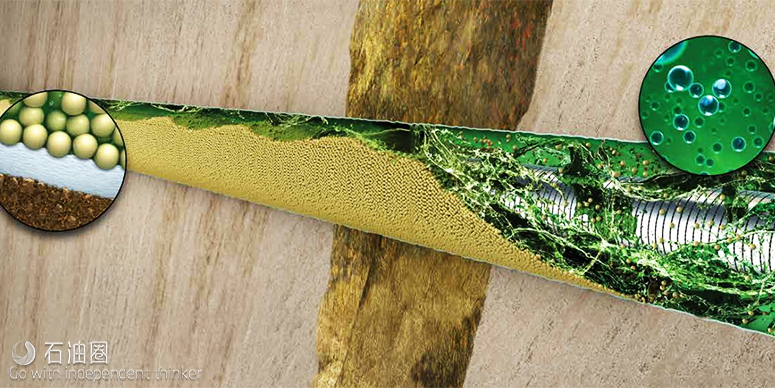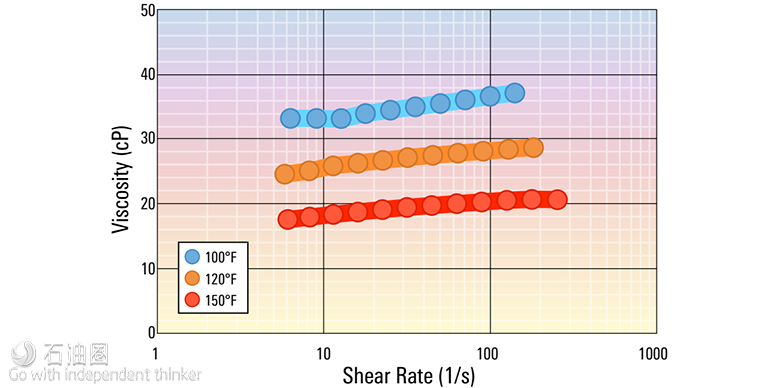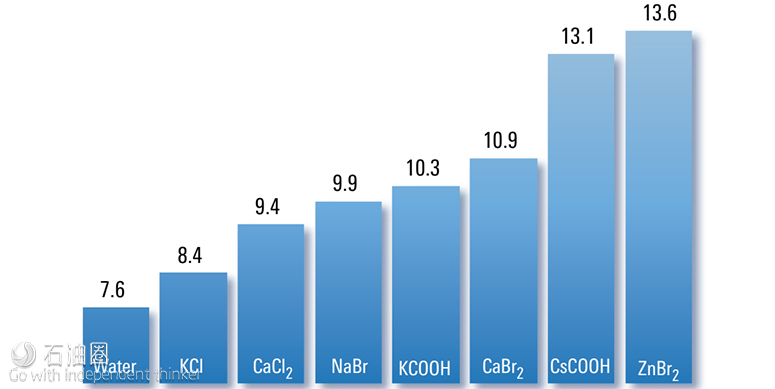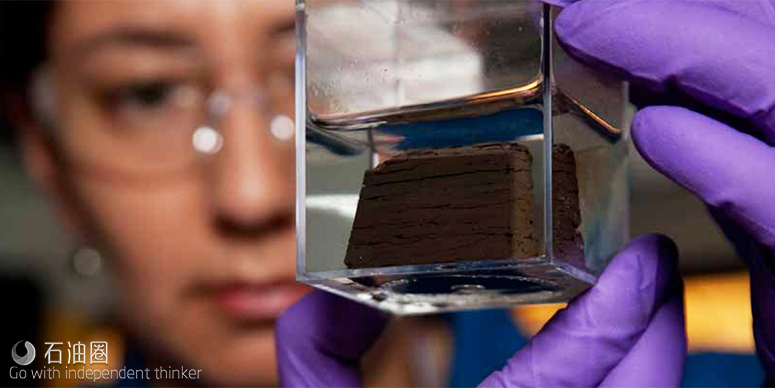PrimoPAC fluid: The stable, reusable solution for optimal OHGP integrity
Synthetic- or oil-base reservoir drill-in fluids often are used to drill wells in formations with reactive shales that are susceptible to water-induced instabilities such as swelling and collapse. The transition to an openhole gravel-pack (OHGP) completion, which typically relies on a brine-base carrier fluid and a spacer, can be extremely problematic when water-sensitive shales are present.
Reduce the costs, impact, and problems associated with openhole gravel-pack completions.
Features
Minimal components
Newtonian fluid rheologies
Low viscosity at bottomhole static temperature
Water-base spacer-free
Solids-free density up to 13.6 lbm/galUS [1.63 SG]
Temperature stability up to 300 degF [149 degC]
Specific QA/QC protocol
Gravel pack simulation with SandCADE* gravel-pack design and evaluation software
Shear insensitivity
Proppant settling rate comparable to brine
Reusability as a carrier fluid
Recyclable with synthetic- or oil-base mud system
Benefits
Enables alpha/beta gravel packingin wells drilled with synthetic- or oil-base mud systems
Prevents cross-fluid incompatibility issues
Eliminates shale stability and dispersion issues
Reduces overall rig time and fluid costs
Promotes seamless well completion with Schlumberger services
Simplifies well site logistics
Elevates environmental profile
Newtonian oil-base gravel packing The novel PrimoPAC fluid mitigates these issues with a simple, stable solution.
The uniquely engineered fluid delivers Newtonian fluid rheologies that maintain low viscosity even at up to 300 degF
[149 degC] bottomhole static temperature. This allows you to remain in a nonreactive oil-base environment from drilling through completions with a simplified displacement that eliminates fluid-fluid compatibility and shale stability issues during gravel packing.
Applied synergistically with Schlumberger AquaPac* integrated water-packing system, PrimoPAC fluid is ideally suited for any horizontal, deviated, or vertical well drilled with synthetic- or oil-base mud and completed with an openhole gravel pack.
Due to its low Newtonian viscosity, PrimoPAC carrier fluid is a perfect fit for alpha/beta gravel packing in high-angle, long-reach wells in the open hole, where it promotes fast proppant settling and successful placement of the alpha wave.
Easily mixed; versatile fluid PrimoPAC fluid is simple to mix and maintain with minimal logistical requirements. It requires only three components: base oil for the continuous phase, brine droplets for the internal phase to provide density, and PrimoSurf† emulsifier to ensure that the base fluid and brine work together and remain stable. This solids-free carrier fluid can be formulated for the full range of brines to a density of up to 13.6 lbm/galUS [1.63 SG] for ensured well control and stability.
One of the main benefits of the PrimoPAC fluid is its reusability as a carrier fluid
on subsequent jobs. This helps minimize volume and lower costs. There are distinct QA/QC protocols in place to determine whether the fluid can be reused. Depending on internal brine phase, once the fluid is deemed nonusable, it may be recycled as part of the synthetic- or oil-base mud.
The bottom line—PrimoPAC fluid presents a viable solution for reducing the issues, costs, and environmental impact of your next openhole gravel-pack completion.
Newtonian rheologies deliver fast-settling alpha/beta packing
The differentiation of PrimoPAC fluid
is its simplicity. The fluid’s minimal components are batch-mixed using basic centrifugal pumps and mixing tanks with straightforward surface and downhole management. Its value is in the carrier fluid’s full compatibility with the mud used to drill the well, which eliminates the water-base spacer and facilitates displacement. PrimoPAC fluid is insensitive to shear and remains stable even during prolonged static periods between jobs.
As an industry pioneer in the development and application of invert emulsion drilling fluids with an unmatched global infrastructure, M-I SWACO uses its inherent knowledge and transfers that technology into the completions arena. Integrating PrimoPAC fluid with the tremendous resources and ingenuity of Schlumberger further accentuates efficiency. SandCADE gravel-pack design and evaluation software accurately predicts various parameters, including friction pressures and alpha-wave height. PrimoPAC fluid is compatible with the AquaPac system and lightweight proppant technologies that mitigate the challenge of staying below the fracture pressure in an openhole gravel pack.
Improve your bottom line while mitigating environmental impact Above all else, PrimoPAC fluid is reusable and recyclable, considerably minimizing the volume of interface slop for disposal and effectively reducing your costs and environmental affect.
Used carrier fluid is put through our stringent QA/QC protocol. When it passes, it is used again as a carrier fluid. If the fluid fails to pass our standards for a carrier fluid, it may be sent to the mud plant for use as premix for oil-base drilling fluid, depending on the brine.
This cost-effective carrier fluid also carries an environmental seal of approval worldwide, including full accreditation to stringent North Sea toxicity specifications.
Combine oil-base fluid with superior gravel packing
The fluid leverages the industry-leading invert emulsion fluid expertise of
M-I SWACO with the unparalleled openhole gravel-pack engineering capabilities of Schlumberger.
PrimoPAC fluid proves itself in the field
The Situation
An operator in the North Sea had been drilling wells in a field with an oil-base drill-in fluid and was completing the wells with an openhole gravel pack using a brine-base carrier fluid. On a number of wells in the field, the operator was experiencing inefficient fluid displacement and incomplete gravel packing, resulting in production that fell short of the forecasted productivity index (PI).
The Solution
For its subsequent gravel-pack completions, the operator decided to replace brine with the PrimoPAC fluid. The objectives were achieving complete gravel packing and improving PI while reducing costs and environmental impact that is associated with the high volume of slop from previous gravel packs.
The Results
The operator’s objectives were exceeded, with 100% gravel-pack efficiency as reflected in complete placements. Further, production rates were well above the expected PI. The fluid was reused on subsequent wells, and the slop volume was reduced from the 30–40 m3 previously generated to 5–10 m3 , reducing the operator’s costs and environmental footprint. The fluid remained very stable for a couple of months while being stored between wells.

 石油圈
石油圈



